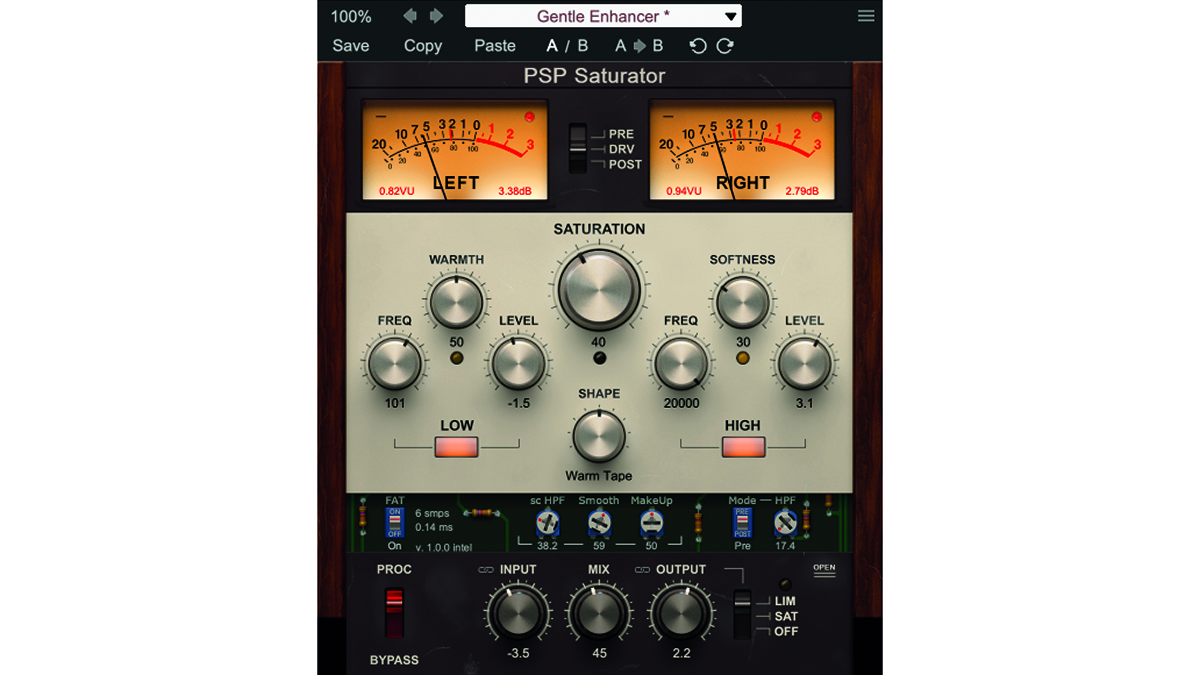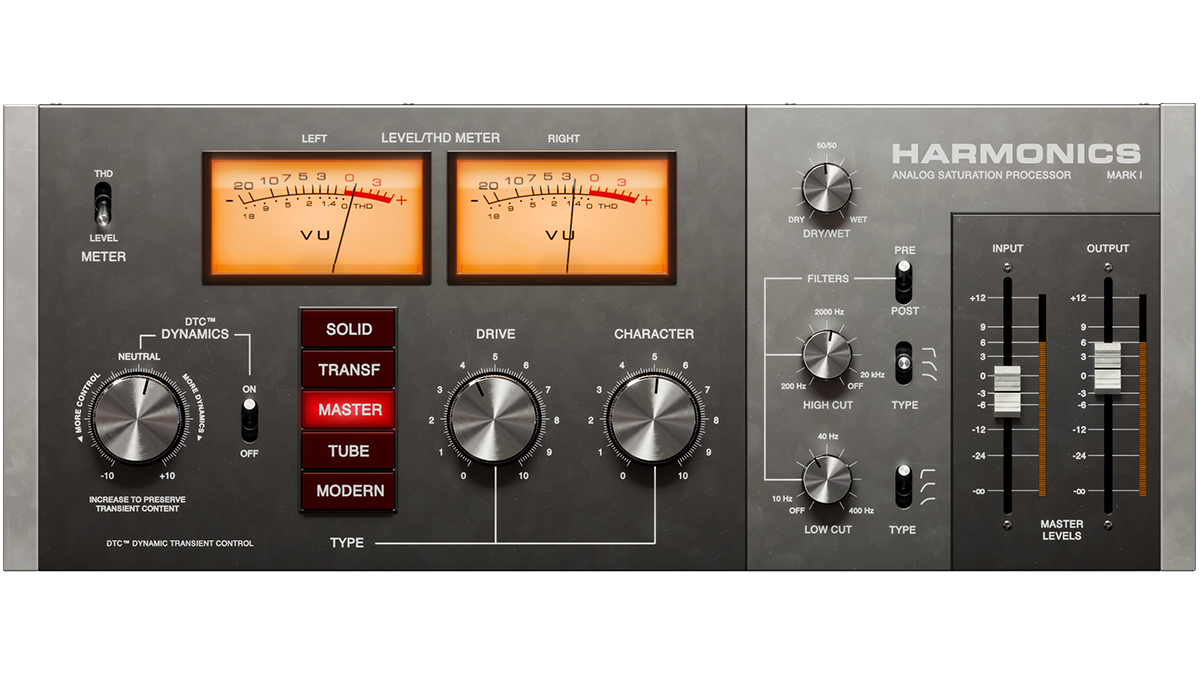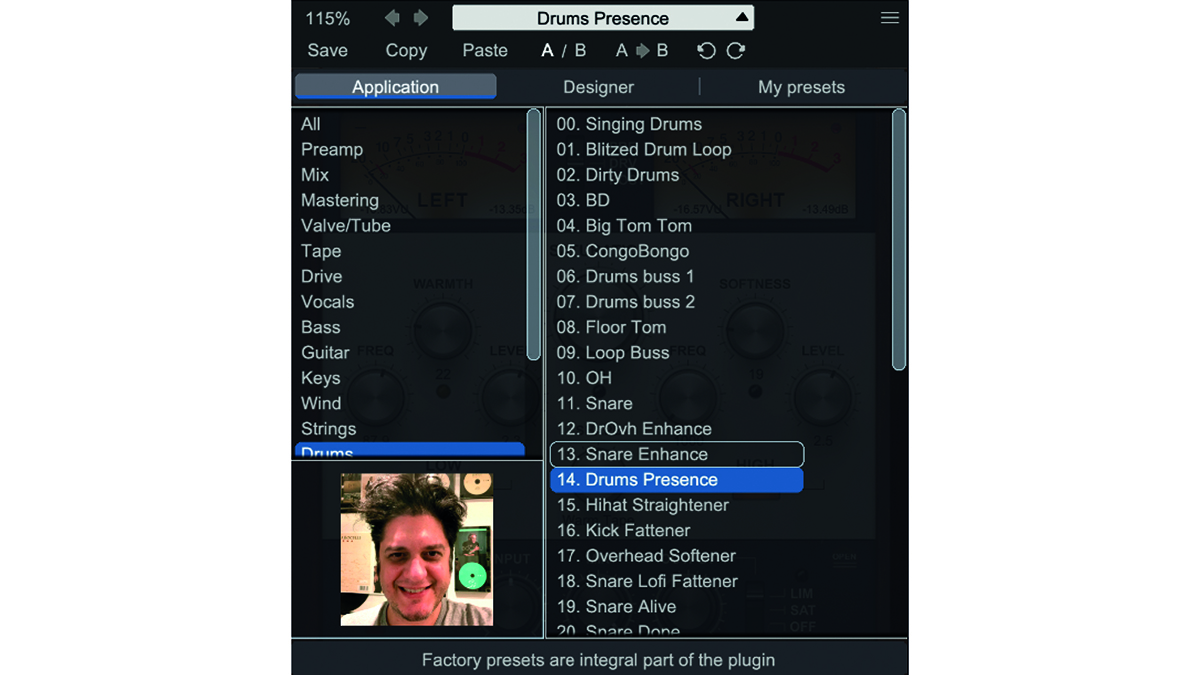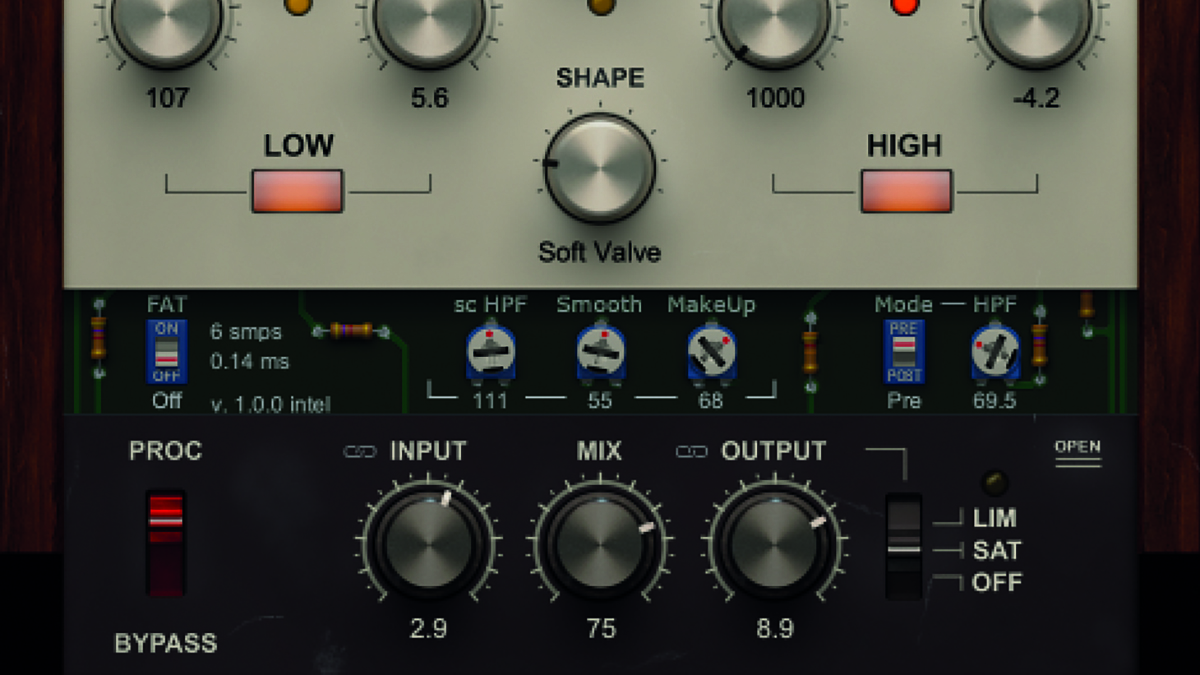MusicRadar Verdict
Saturator is a highly flexible and well-equipped processor that delivers a vast array of tape and valve saturation effect.
Pros
- +
Flexible core saturation effect.
- +
Additional low and high-frequency saturation processors.
- +
Sidechain high pass option.
- +
Additional output limiter and saturation stage useful.
Cons
- -
Not much.
MusicRadar's got your back
PSP Audioware PSP Saturator: What is it?
PSP Audioware is a well established developer with a portfolio of industry respected plugins, including classics such as VintageWarmer and SpringBox. One of its long established bundles is MixPack 2, which includes six mix bus processors covering dynamics, transient shaping, EQ, enhancement and saturation. It’s the MixSaturator plugin from this bundle that forms the starting point for PSP’s new saturator plugin.
Nevertheless, with 20 years on the clock, the company has clearly decided it was time to go for a total overhaul. So, although there’s a lot of familiarity here in terms of controls, the new plugin now runs on completely rewritten or substantially redesigned algorithms.
These not only take full advantage of PSP’s current DSP know-how, but have also been tweaked sonically, making PSP Saturator a completely new plugin with no backwards compatibility issues.

PSP Audioware PSP Saturator: Performance and verdict
PSP Saturator (VST, VST3, AU, AAX) is designed to deliver everything from subtle enhancement to deep saturation but avoids extreme distortions. The main engine emulates valve and tape-style effects and uses a combination of harmonics, filtering and dynamics. It has three core algorithms with a main saturation option joined by more bespoke low and high saturation effects. The Low feature emulates a low frequency bump and includes adjustable frequency (20Hz to 400Hz), Level (+/-15dB) and amount (Warmth).

• Softube Harmonics
Modelled distortion effects and Softube’s Dynamic Transient Control tech mean good things.
• FabFilter Saturn 2
Multiband distortion and saturation with FabFilter’s excellent interface deliver a compelling processor.
Meanwhile High emulates tape compression with adjustable frequency (1kHz to 20kHz), depth (Softness) and Level (+/-15dB). The core saturation engine has an overall depth (Saturation) coupled with eight different modes (Shape). This second control massively influences the character of saturation and moves from very subtle sounds (Soft Valve) through to extreme clipping (Hard Clip), so you have lots of tonal flavours to play with. All three saturation stages can be bypassed either using their On/Off buttons or for the main saturation by choosing Shape setting None.
Although PSP Saturator doesn’t include a frequency analyser, there’s still plenty of metering, with peak and VU meters and a choice of metering sources. Meanwhile, saturation depth is indicated by yellow/red LEDs for each of the three saturation engines. At the bottom, an additional fold-down panel includes some additional parameters (see box out). Finally, you have Input and Output controls with reverse linking, a wet/dry Mix control with internal intelligent phase alignment and a final Output Shaping process (Off, Sat and Limit).
Flavour
Saturator’s core shapes offer an impressive selection of flavours. As noted, the general trend is from light to heavy as you move clockwise. But take both subjectively – and looking at the analyser – each setting has quite a specific harmonics balance primarily made up of odd harmonics. At the lower end we particularly like the difference between Hard Valve, which has strong lower harmonics but then tails off quickly, and Medium Valve, which has a more linear distortion across the higher harmonics.
Meanwhile, for the more aggressive settings, although Hard Clip has the most dominant higher harmonics, we are particularly drawn to the Ram setting, with its distinctly non-linear scooped harmonic shape. Indeed, one thing which is very apparent and we particularly like about PSP Saturator is that, as you change the saturation amount, not only do you get harmonics, but the overall frequency balance is also affected. This is far more in keeping with real world saturation behaviours, and something that isn’t always replicated that well in plugins.
The two additional processors provide excellent sonic extension. Low adds a specific harmonic balance with both odd and even harmonics and the frequency setting lets you tailor the upper frequency limit. So, with a low frequency setting (50Hz for example), you’ll only introduce harmonics up to about 300Hz, but open up the control and you’re moving up to the 1kHz to 1.5kHz mark. High, meanwhile, adds odd harmonics and the frequency control helps you specify where they begin to kick in.

Sounds
PSP Saturator’s 200 presets provide a great springboard, not only because there are plenty to choose from, but also because they are properly categorised.
You can really get a feel for what PSP Saturator does in a matter of just minutes
Groupings include usage type (Mastering, Mix), saturation type (Tape, Valve, Drive) and also instrument type (Drums, Vocals, Keys and so on). This makes finding a suitable preset very easy indeed and you can really get a feel for what PSP Saturator does in a matter of minutes.
We like many of the 26 bass patches. As you would expect, there are patches for adding presence to a sub, or edge to bass guitar. But you’ve also got patches that are great for adding or even removing low end weight. With 40 drum presets you’ve got everything from subtle drum bus patches (Massive Analogue Mojo) and drum specific options (Snare Alive, 808 Saturation) to more extreme mangling style patches (Blitzed Drum Loop, Industrial Grind). Meanwhile for vocals there’s subtle (Warm Lead Vocal) and not so subtle (Megaphone).

Open sesame
Saturator has an advanced parameters panel at the bottom. This Internal Board contains five options alongside some retro-inspired circuitboard graphics. One key feature here is FAT mode. This applies the x4 quad oversampling algorithm and from the block diagram we can see this affects the High and Saturation processing engines, though not the Low saturation engine that precedes them. It’s designed to reduce aliasing, particularly with heavy processing.
Next up, you have a sidechain high-pass filter (10Hz to 1kHz). This influences the main saturation engine and we found it great for focusing the processing away from the lower frequencies. This is really handy when combining the Low saturation and main saturation engines as it allows you to prevent too much overlap. Following this is a Smooth control that, when increased, gradually reduces harshness and aliasing. Then there’s a post-saturation Makeup control. Rounding things off is a regular high-pass filter (5Hz to 250Hz).
Rather excellently you can position this pre, post, or even both pre and post. This gives great flexibility to shape signal processing. In fact, we’re not entirely sure why this significant option is hidden away in this panel.
Conclusion
- 46GB download size.
- 46GB disk space required during install.
- Mac OS X 10.10 to OS X 11. Minimum: 2.8GHz i5 minimum (quad-core), 8GB RAM. Recommended: 2.8GHz i7 (six-core), 16GB RAM. M1 Apple computers are supported and 64-bit daws-the-best-music-production-software-for-%3Ca%20href=" style="text-decoration: underline; box-sizing: border-box;">pc-and-mac" style="text-decoration: underline; box-sizing: border-box;">DAW required. — To use the multi-voice arranger. Minimum: Intel Core i7 (or Xeon from mid 2015 models or newer).
- Windows 7, Windows 8, or Windows 10 (latest Service Pack, 64-bit). Minimum: Intel Core 2.8GHz i5 (quad-core) or AMD Ryzen 5, 8GB RAM. Recommended: Intel 2.8GHz i7 (six-core) or AMD R7 2700, 16GB RAM. — To use the multi-voice arranger. Minimum: Intel Core i7 7th gen and later or AMD Ryzen 7 2700X.
- CONTACT: Spitfire Audio
PSP Audioware PSP Saturator: Hands-on demos
PSPaudioware
White Noise Studio
White Sea Studio
Alberto Rizzo Schettino
PSP Audioware PSP Saturator: Specifications
- PC: Windows 7 – Windows 11. VST3: 64-bit VST3 compatible application. VST: 64-bit VST compatible application. AAX: 64-bit Pro Tools 11, 12 or Pro Tools HD 11, 12 or Pro Tools Ultimate.
- macOS Intel or macOS Silicon: macOS 10.10 – macOS 12.01 Monterey. AudioUnit: 64-bit AudioUnit compatible host application. VST: 64-bit VST compatible host application. VST3: 64-bit VST3 compatible host application. AAX: 64-bit Pro Tools 11, 12 or Pro Tools HD 11, 12 or Pro Tools Ultimate.
- CONTACT: PSP Audioware
Computer Music magazine is the world’s best selling publication dedicated solely to making great music with your Mac or PC computer. Each issue it brings its lucky readers the best in cutting-edge tutorials, need-to-know, expert software reviews and even all the tools you actually need to make great music today, courtesy of our legendary CM Plugin Suite.
Brace yourself: Bryan Adams didn’t buy his first real six-string in a five and dime
“Nobody listens to one genre. I literally don’t know anybody who listens to one genre. You can be a fan of so many different artists at once”: Laufey on what Gen Z can teach the rest of us about how to appreciate music
Bon Iver - ranked: from Sable, Fable to For Emma, Forever Ago











